The New South Wales government has released several new guidelines for large-scale solar, wind, and transmission projects aimed at streamlining and standardising renewable project decisions as the state attempts to rapidly replace outgoing coal plants.
The draft guidelines speak to the state’s ongoing issues around social licence, with the government saying in a formal review published in March that “the friction that is emerging [between communities and renewable proponents] may be the most significant risk to policy success.”
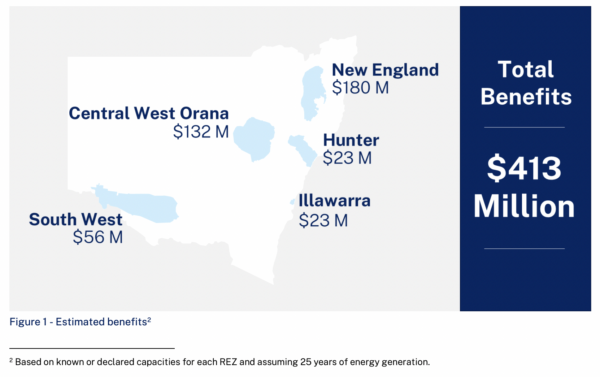
The most pertinent proposals include a “standard” benefit sharing payment for both solar and wind projects, sitting at $850 per megawatt per annum for solar, and $1050 per megawatt per annum for wind. The state government estimates the scheme would provide up to $413 million to host communities over a 25-year period. This scheme does not include the payments to individual landowners hosting projects.
The government is also proposing wind and solar projects which include a “significant energy storage system” could be deemed Critical State Significant Infrastructure, shifting the approval pathway purely to the state government, meaning there less opportunity for projects to be overturned by local opposition. The ballpark for “significant storage” is 750 MW of capacity or more.
The government has also provided two maps charting suitable to non-suitable locations for both solar and wind projects across the state. While the solar map has many possibilities along transmission routes, the potential for wind looks far more desolate, with almost no areas deemed “suitable.”
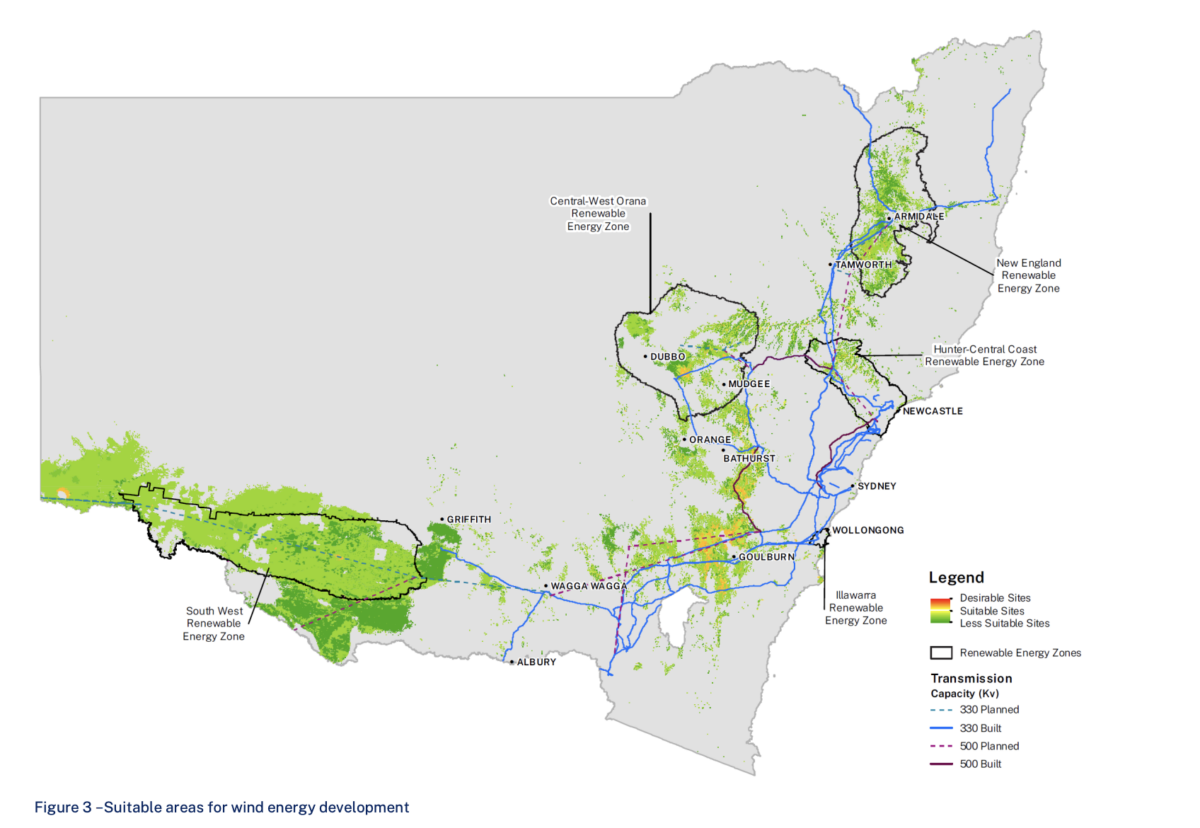
Image: NSW government
The draft guidelines will remain on public exhibition until December 18, 2023, with the government urging industry and community to provide feedback. It is aiming to have the finalised guidelines completed by early 2024.
Issues raised around community benefit sharing proposal
While councils and local communities have been lobbying for greater community benefits, some fear the proposed scheme could undercut ongoing negotiations between developers and councils in the Renewable Energy Zones. For example, the three main local government councils within the Central West Orana Renewable Energy Zone (REZ) – Warrumbungle, Dubbo, and Mid-Western councils – already have policies stating renewable proponents must provide contributions to the tune of 1.5% of their project’s Capital Investment Value via a Planning Agreement. This contribution over the life of the project aims to offset impacts and disturbances to local communities, including covering the costs of ongoing damage to local roads, other infrastructure and social services.
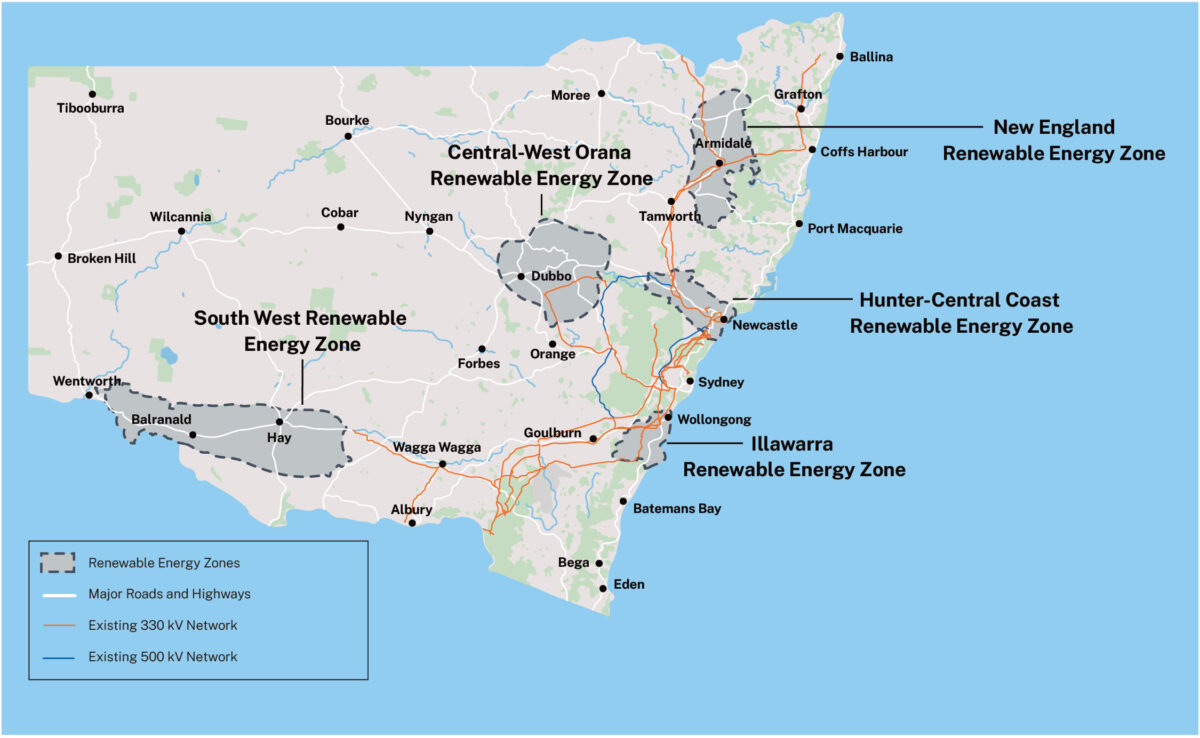
Image: EnergyCo
A person familiar with negotiations told pv magazine Australia the state government’s proposed benefit sharing scheme roughly equates to this 1.5% figure that impacted councils have been advocating. The fear is that under the state government’s proposal, some of the benefit sharing income could be paid directly to various ad-hoc community groups which do not have a mandate to maintain shared assets within the district, as a local council does. Moreover, such groups are not covered by the same accountability provisions as local government.
In other words, there is concern that under the proposed scheme, councils could lose a substantial portion the project’s benefit payments as the funding would be dissipated across various community groups and funnelled into things like local sports clubs.
Councils within the Central West Orana and New England REZs have been working in concert to bolster their position amid an influx of project proposals in their areas. However, councils outside the formal REZs may still have a number of renewable proposals to examine, but lack the know-how to properly assess these and negotiate with developers – making formal, state-backed guidelines helpful.
The other potential issue raised around the draft guidelines is just that – the document is a guideline, not a mandate, meaning renewable proponents would not be actually required to share monetary benefits.
The guideline is likely the result of ongoing unrest in regional communities who often feel they are the ones bearing the negative impacts of renewable projects, including increased traffic and road damage, increased demands on social services and other community changes. So while the whole state benefits from decarbonisation, the negative impacts are only shouldered by regional populations.
State Significant Development vs. Critical State Significant Infrastructure
Currently in NSW, renewable energy generation projects are defined as State Significant Developments, and the elevated title of State Significant Infrastructure is usually set aside only for major transmission lines, major roads, rail projects and other major infrastructure.
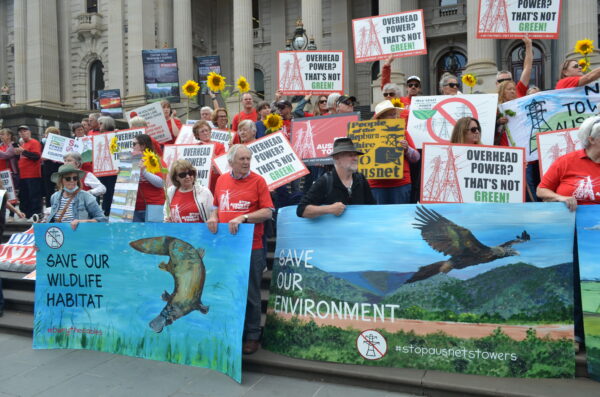
Image: Darren Edwards
While local government and communities have an opportunity to examine the adequacy of Environmental Impact Statements (EISs) for both types of development, Significant Infrastructure projects are in effect mandated by the state government and there is limited scope for councils or the general public to overturn such a development.
On the other hand, projects deemed State Significant Developments can be tangibly affected by community and council opposition with decisions deferred to the Independent Planning Commission of NSW if the applicable council decides to oppose the project or if more than 50 public objections are lodged in response to the EIS.
This may not sink a project, but it does heavily delay it. Such things likely lay behind the new proposal to deem even solar and wind projects as State Significant Infrastructure if they include 750 MW+ of storage – deemed the most vital technology for actually getting the state to a fully decarbonised grid.
Additional guidance
The draft guidelines also outline how noise, visual and other community impacts should be evaluated and managed through the development assessment process.
The government has also put forward a range of draft tools to help landholders considering hosting renewable energy development. Again, this is an attempt to level the playing field with the government in March publishing its review of the renewable sector’s conflicts with agriculture, in which it flagged that farmers and individuals often lack the tools to adequately negotiate with the big companies behind projects.
“These proposed new guidelines will support faster decisions and clearer rules that will increase certainty for the industry and communities,” NSW Minister for Planning and Public Spaces Paul Scully said.
This content is protected by copyright and may not be reused. If you want to cooperate with us and would like to reuse some of our content, please contact: editors@pv-magazine.com.
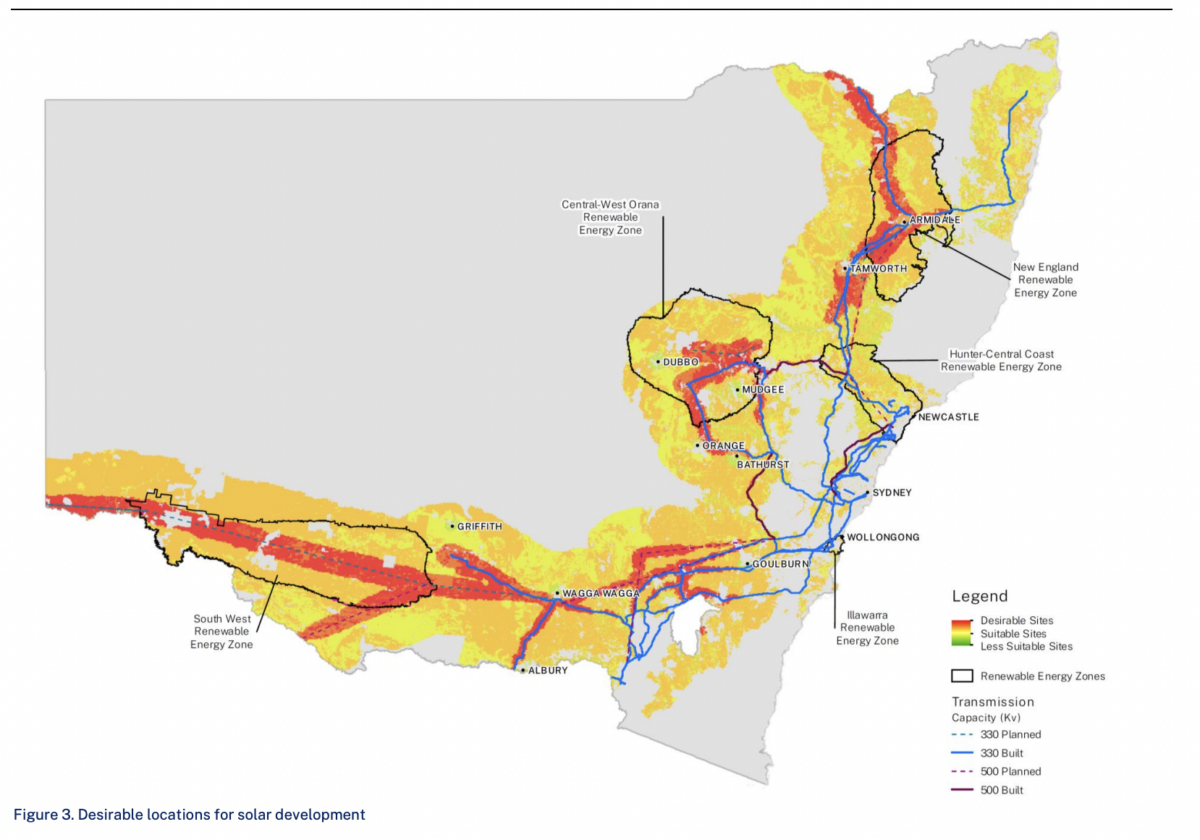








3 comments
By submitting this form you agree to pv magazine using your data for the purposes of publishing your comment.
Your personal data will only be disclosed or otherwise transmitted to third parties for the purposes of spam filtering or if this is necessary for technical maintenance of the website. Any other transfer to third parties will not take place unless this is justified on the basis of applicable data protection regulations or if pv magazine is legally obliged to do so.
You may revoke this consent at any time with effect for the future, in which case your personal data will be deleted immediately. Otherwise, your data will be deleted if pv magazine has processed your request or the purpose of data storage is fulfilled.
Further information on data privacy can be found in our Data Protection Policy.